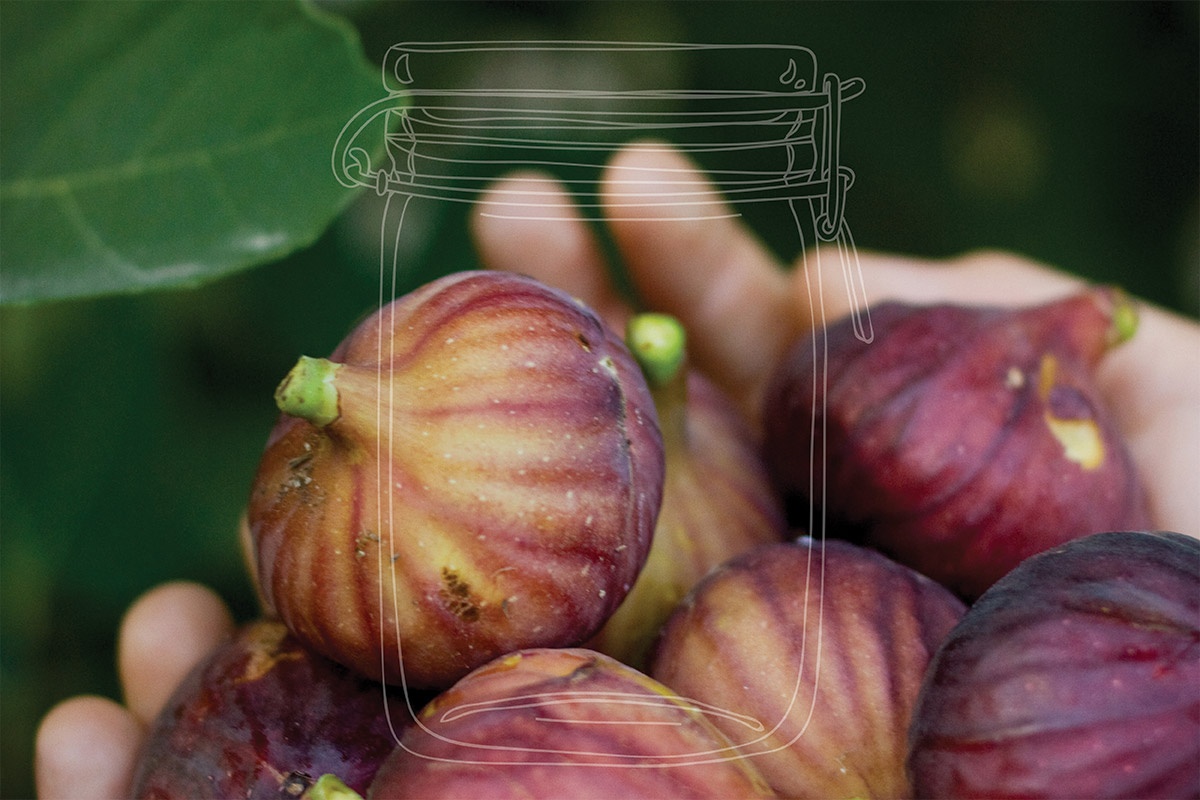When a goliath of a backyard fig tree looms over the roof of your house, you feel a special obligation to prevent countless ripening figs from going to waste (or to the birds). That sense of obligation prompted wife Laura and me to spend a Sunday afternoon last summer harvesting figs, clipping off the stems, carefully tending them on the stove as they jiggled in pots of boiling water and then ladling the beautiful golden preserves through a funnel into glass jars. For an afternoon, at least, we were preserving the way our forebears used to.
My primary chore was to clamber barefoot among branches the size of an elephant’s leg, ducking limbs, plucking the just-turning-purple fruit and trying to avoid the souring, gnat-attracting fig mash that carpeted the bare ground beneath the tree. At one point, I blundered into a spiderweb and when, seconds later, a dive-bombing wasp bounced off my eyelid, I thought of a lesson from the Bible.
As the Gospel of Matthew recounts, Jesus was headed back to the city one morning after preaching in Bethany, and he was hungry. Spying a leafy fig tree up the road, his spirit lifted, but when he got closer, he saw it was barren. A burst of righteous anger ensued.
“May you never bear fruit again!” he exclaimed. He had barely gotten the words out of his mouth when the fruitless tree withered, its green leaves instantly turning brittle and yellow. He used the incident to illustrate the efficacy of faith.
My dad grew up in the early decades of the 20th century on a Hill County cotton farm. Even though he fled the drudgery as soon as he could, he jumped at the chance when my brothers and I were kids to buy a house on the edge of town with mature fruit trees, including figs, and an adjacent lot for a large garden. Mom was a city girl—Bigfoot, population 250—and had spent more time behind the counter of her folks’ general store than she did learning to preserve nature’s bounty. In the semirural house that appealed to her husband’s farm-boy fantasies, she taught herself to preserve in Mason jars not only figs but also green beans, black-eyed peas, tomatoes, okra and blackberries, not to mention plums, peaches, pears and apricots (even as she tried to corral three rambunctious boys).
The best description of canning’s tedium you’ll ever read is in the first volume of Robert Caro’s Lyndon B. Johnson biography, The Path to Power, in the chapter titled The Sad Irons. He’s writing about farm life that lasted into the 1940s.
“Since—because there was no electricity—there were no refrigerators in the Hill Country, vegetables or fruit had to be canned the very day they came ripe,” Caro writes. “And, from June through September, something was coming ripe almost every day, it seemed; on a single peach tree, the fruit on different branches would come ripe on different days. In a single orchard, the peaches might be reaching ripeness over a span as long as two weeks.”
Elderly farm wives recalled for Caro that after the peaches, the strawberries would ripen, then the gooseberries and the blueberries. The tomatoes would ripen before the okra, the okra before the zucchini and the zucchini before the corn. Canning went on all summer—along with hauling water every morning, cooking meals on a wood stove for family and farmhands, mending and washing clothes, smoothing out wrinkles with a 6-pound wedge of hot iron (a “sad iron”), and tending to the kids.
Caro interviewed Kitty Clyde Ross Leonard, LBJ’s first girlfriend who later became a teacher, principal and superintendent of Johnson City schools. “You’d have to cook for hours,” she recalled. “Oh, that was a terrible thing…. I remember the perspiration pouring down my mother’s face, and when I grew up and had my own family, it poured down mine. That stove was so hot.” A Hill Country farmwoman named Gay Harris told Caro: “We had no choice, you see.”
These days, we do have choices, and from what I hear, more and more Texans are reverting to the old ways, even if they don’t have big gardens. Relying on roadside stands and farmers markets, they’re able to can fresh fruits and vegetables almost year-round. There’s joy in that experience—and pride in being heirs to a venerable tradition. (Fortunately, preserving is not as arduous as it once was.)
Fig preserves, anybody? As I write on this hot afternoon, another batch just turned purple.
Joe Holley, a writer for the Houston Chronicle, is a former editor of Texas Co-op Power.


